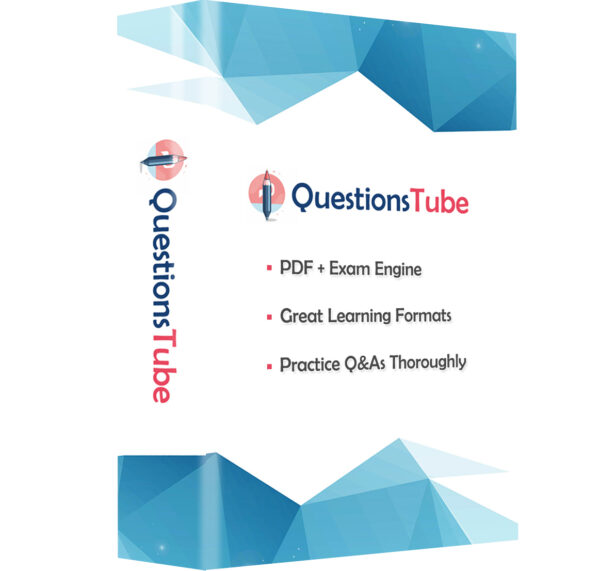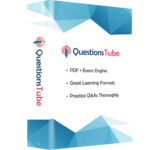Order our AZ-400 Practice Questions Today and Get Ready to Pass with Flying Colors!
Product Description
Introduce Microsoft AZ-400 Exam
The Designing and Implementing Microsoft DevOps Solutions AZ-400 exam is the part of the requirements for Microsoft Certified: DevOps Engineer Expert certification. What is the process of earning the certification? You need to earn one of the following certifications as the prerequisite:
- Microsoft Certified: Azure Administrator Associate (AZ-104)
- Microsoft Certified: Azure Developer Associate (AZ-204)
Then you need to pass the Microsoft AZ-400 exam successfully. DevOps engineers are developers or infrastructure administrators who also have subject matter expertise in working with people, processes, and products to enable continuous delivery of value in organizations. The Microsoft AZ-400 exam is available in multiple languages, including English, Japanese, Chinese (Simplified), Korean, German, French, Spanish, Portuguese (Brazil), Arabic (Saudi Arabia), Russian, Chinese (Traditional), Italian, Indonesian (Indonesia). Make sure that you can pass the AZ-400 exam and earn the Microsoft Certified: DevOps Engineer Expert certification to promote your positions.
Learning AZ-400 Exam Objectives Is Strongly Recommended
- Plan and implement a structure for the flow of work and feedback cycles
- Identify appropriate metrics related to flow of work, such as cycle times, time to recovery, and lead time
- Integrate Azure Pipelines and GitHub Actions with work item tracking tools
- Implement traceability policies decided by development
- Integrate a repository with Azure Boards
- Communicate actionable information by using custom dashboards in Azure Boards
- Document a project by using tools, such as wikis and process diagrams
- Configure release documentation, including release notes and API documentation
- Automate creation of documentation from Git history
- Configure notifications by using webhooks
- Design and implement an authentication strategy
- Design a strategy for managing large files, including Git LFS and git-fat
- Design a strategy for scaling and optimizing a Git repository, including Scalar and cross-repository sharing
- Implement workflow hooks
- Design a branch strategy, including trunk-based, feature branch, and release branch
- Design and implement a pull request workflow by using branch policies and branch protections
- Implement branch merging restrictions by using branch policies and branch protections
- Integrate GitHub repositories with Azure Pipelines
- Configure permissions in the source control repository
- Configure tags to organize the source control repository
- Recover data by using Git commands
- Purge data from source control
- Integrate pipelines with external tools, including dependency scanning, security scanning, and code coverage
- Design and implement quality and release gates, including security and governance
- Design integration of automated tests into pipelines
- Design and implement a comprehensive testing strategy (including local tests, unit tests, integration tests, and load tests)
- Design and implement UI testing
- Implement orchestration of tools, such as GitHub Actions and Azure Pipelines
- Design a package management implementation that uses Azure Artifacts, GitHub Packages, NuGet, and npm
- Design and implement package feeds, including upstream sources
- Design and implement a dependency versioning strategy for code assets and packages, including semantic versioning and date-based
- Design and implement a versioning strategy for pipeline artifacts
- Select a deployment automation solution, including GitHub Actions and Azure Pipelines
- Design and implement an agent infrastructure, including cost, tool selection, licenses, connectivity, and maintainability
- Develop and implement pipeline trigger rules
- Develop pipelines, including classic and YAML
- Develop complex pipeline scenarios, such as containerized agents and hybrid
- Configure and manage self-hosted agents, including virtual machine (VM) templates and containerization
- Create reusable pipeline elements, including YAML templates, task groups, variables, and variable groups
- Design and implement checks and approvals by using YAML environments
- Design a deployment strategy, including blue/green, canary, ring, progressive exposure, feature flags, and A/B testing
- Design a pipeline to ensure reliable order of dependency deployments
- Plan for minimizing downtime during deployments by using VIP swap, load balancer, and rolling deployments
- Design a hotfix path plan for responding to high-priority code fixes
- Implement load balancing for deployment, including Azure Traffic Manager and the Web Apps feature of Azure App Service
- Implement feature flags by using Azure App Configuration Feature Manager
- Implement application deployment by using containers, binary, and scripts
- Recommend a configuration management technology for application infrastructure
- Implement a configuration management strategy for application infrastructure, including IaC
- Define an IaC strategy, including source control and automation of testing and deployment
- Design and implement desired state configuration for environments, including Azure Automation State Configuration, Azure Resource Manager, Bicep, and Azure Automanage Machine Configuration
- Monitor pipeline health, including failure rate, duration, and flaky tests
- Optimize pipelines for cost, time, performance, and reliability
- Analyze pipeline load to determine agent configuration and capacity
- Design and implement a retention strategy for pipeline artifacts and dependencies
- Implement and manage service connections
- Implement and manage personal access tokens
- Implement and manage secrets, keys, and certificates by using Azure Key Vault, GitHub secrets, and Azure Pipelines secrets
- Design and implement a strategy for managing sensitive files during deployment
- Design pipelines to prevent leakage of sensitive information
- Automate analysis of source code by using GitHub code scanning, GitHub secrets scanning, pipeline-based scans, and SonarQube
- Automate security scanning, including container scanning and OWASP ZAP
- Automate analysis of licensing, vulnerabilities, and versioning of open-source components by using Mend Bolt and GitHub Dependency Scanning
- Configure and integrate monitoring by using Azure Monitor
- Configure and integrate with monitoring tools, such as Azure Monitor and Application Insights
- Manage access control to the monitoring platform
- Configure alerts for pipeline events
- Inspect distributed tracing by using Application Insights
- Inspect application performance indicators
- Inspect infrastructure performance indicators, including CPU, memory, disk, and network
- Identify and monitor metrics for business value
- Analyze usage metrics by using Application Insights
- Interrogate logs using basic Kusto Query Language (KQL) queries
How can you prepare for the AZ-400 exam well? One of the best ways is to use AZ-400 practice questions of QuestionsTube.
Our AZ-400 Practice Questions include:
– AZ-400 exam questions and answers: These are the most updated and accurate questions and answers that reflect the real exam content and format. You can practice them online or offline, and check your answers with detailed explanations.
– AZ-400 exam questions pdf: It is the most valid and effective pdf file that contains the actual exam questions and answers. You can download it and use to read all the questions and answers anytime and anywhere.
– AZ-400 ICE exam engine: This is a powerful tool that simulates the real exam environment and allows you to test your knowledge and skills under time pressure. You can customize your exam mode, difficulty level, question type, and number of questions.
– AZ-400 free update: This is a great advantage of QuestionsTube’s AZ-400 exam questions. You can choose the free update privilege to make sure that you will always have the latest study materials in a valid period.
By using our AZ-400 exam materials, you can:
– Save your time and money: You don’t need to spend hours searching for other sources or paying for expensive courses or books. Our AZ-400 exam materials are enough to prepare you for the exam.
– Enhance your confidence and performance: You can familiarize yourself with the exam format and content, and improve your speed and accuracy. You can also identify your strengths and weaknesses, and work on them accordingly.
– Guarantee your success: We have a high pass rate and a full refund policy. If you use our AZ-400 exam materials and fail the exam, we will refund your money without any hassle.










Reviews
There are no reviews yet.